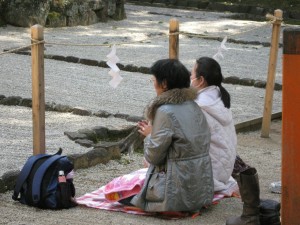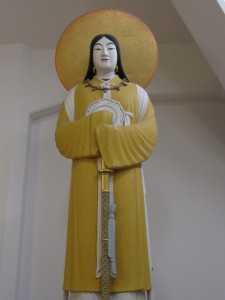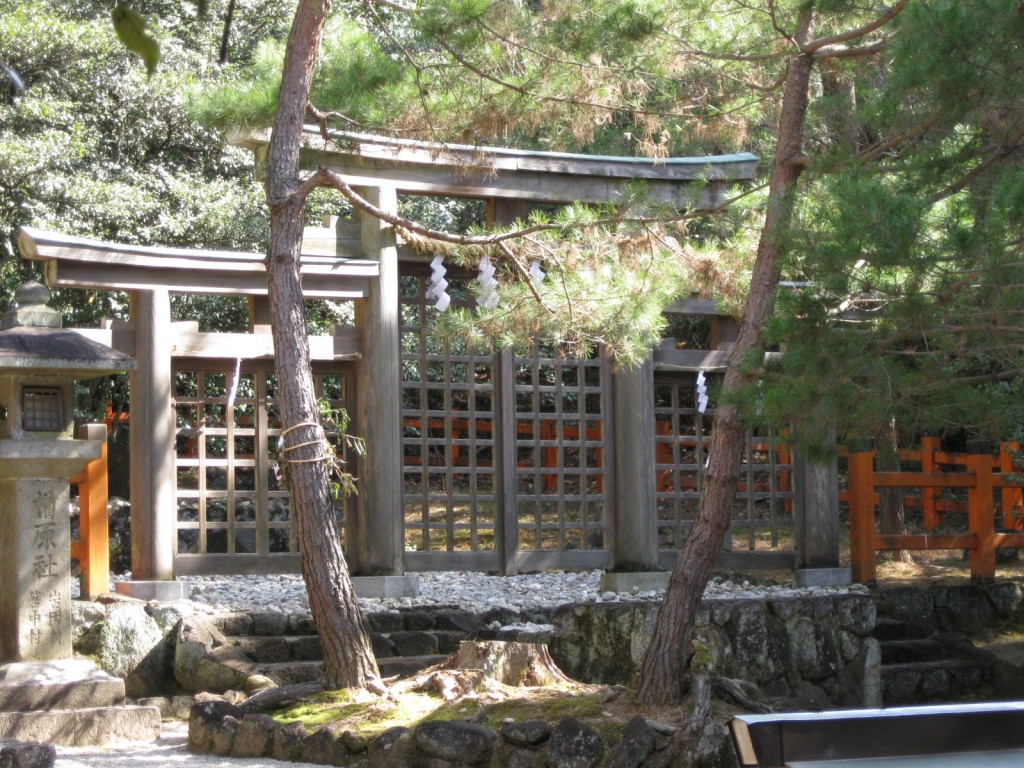What happened to Amaterasu when she was banished from the imperial palace? It’s an intriguing question that goes to the heart of the imperial connection and the mythical descent from the sun goddess.

For some Hibara Jinja is sacred ground
Some time ago I made a trip out to Omiwa, one of Japan’s most ancient and sacred shrines (see entry under Shrine Visits). My purpose was not Omiwa itself, but nearby Hibara Jinja. According to Shinto mythology, it is where Amaterasu was taken when she was banished from the imperial palace by the legendary Sujin. The shrine is a bare fifteen minutes walk from Omiwa where the Yamato palace was located, so she didn’t exactly get banished very far. Interestingly the unmanned shrine is the only other one to have the characteristic triple torii of Omiwa.
Hibara Jinja is the first of the many shrines known as Moto Ise which housed Amaterasu on her long trek around the middle of Japan looking for a permanent home. It’s thought that she might in fact have been carried on a military conquest to subdue the territory for the Yamato kings. According to the mythology, she appeared in a dream to announce that she wanted to be housed in Ise, because of its pleasant location. As it happens, it was a site of strategic importance for the conquest of eastern Japan.

Statue of Amaterasu (Ise museum)
There’s speculation that Amaterasu was banished from the imperial palace because of an internal dispute amongst the ruling factions, and that her supporters lost out to those who championed a different deity. There’s also speculation that Amaterasu was male at the time and underwent a gender change (which would make her well ahead of her time!). Perhaps her gender was altered to fit in with the solar cult of the fishermen at Ise, which she apparently supplanted.
As the military campaign through central Japan was successful, Amaterasu’s prestige rose as a result. It’s thought that sometime around the fifth or sixth century she was claimed by the Yamato kings as royal ancestor, perhaps because they were looking for a solar deity to outshine the powerful ancestral kami of rival clans. Connection with the sun was already a vital part of kingship on the continent, and so a mythology was concocted to show royal descent.
Then in the late seventh century a usurper called Tenmu (c.631-686) ordered the compiling of a ‘history’ to prove the divine descent of his family line from the sun goddess, in order to boost his authority. It was only much later, after his death, that the official court records of Kojiki (712) and Nihon shoki (720) appeared. Tenmu was the first Yamato ruler to take the title of emperor, and the mythology he ordered to be compiled still prevails today. The present emperor is held to be the 125th in line from Amaterasu.

The triple torii of Hibara Jinja

Leave a Reply